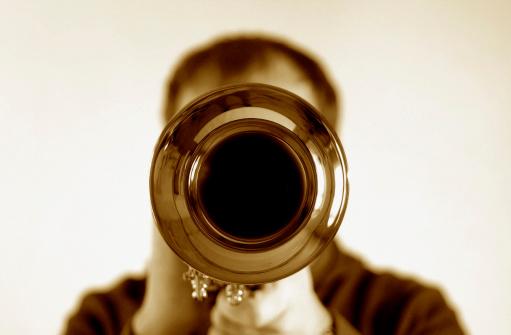 As a musician or vocalist, you spend hours upon hours upon hours practicing. Yours is a craft that requires constant attention and fine tuning of minute details to maintain your current skill level and attain incremental improvements.
As a musician or vocalist, you spend hours upon hours upon hours practicing. Yours is a craft that requires constant attention and fine tuning of minute details to maintain your current skill level and attain incremental improvements.
And you’re passionate in pursuit of that goal!
Thousands of dollars are spent on training – from the best universities and instructors to the finest instruments money can buy (or the finest you can currently afford!). You search in earnest for the best mouthpiece, for reeds, special strings, tuners and more.
But, is something still missing? Something so basic, you forget about it.
Does your performance suffer from the limited air you can draw on for those last notes? Or maybe the not-so-last notes?
Are You Getting Enough Air?
Jim Akins an orchestral tubist and professor at Ohio State University, stresses the importance of adequate air and support for musicians and vocalists in practice and performance – both in terms of their execution and confidence. On the impact of being able to effectively control air flow, he says,
“One’s confidence in their ability is first attacked when the air is not there, or not in the right levels or control, causing a rapid downward spiral into a poor performance! As a performer and recitalist, I constantly receive comments of how lyric and musical my performances are. In the orchestra, I can control my performances to extreme levels of pppp and ffff levels…and have the confidence that I control the performance!”
You might be thinking, that sounds great, but how do I get there?
In a few words, respiratory muscle training.
What Is Respiratory Muscle Training?
You can improve your performance and control with strength training – and not the kind you do at the gym.
Respiratory muscle training is simply working the muscles you use to breathe. It’s like weight training for your breathing muscles.
But, you say, I already do breathing exercises. Those help, but at what pace of improvement? We’re definitely advocates of working smarter, not harder. If you could accelerate improvements and realize greater control over your performances, why not do it?
How Do You Train Respiratory Muscles?
Strengthening respiratory muscles, like working other muscles, can be accomplished through resistance training. There are quite a few devices out there aimed at strengthening your respiratory muscles, but they largely fall short of the mark. This is because they have a limited approach – they only train inhale muscles or use a method known as restrictive resistance. These approaches have limited, if any, positive results. (Find out more here.)
To gain optimal results, you want a device that works the muscles used to inhale and exhale, and that uses threshold resistance. Threshold resistance creates a workload to work against – much like weight training for your other muscles. Working your inspiratory (inhale) and expiratory (exhale) muscles allows you to train the full range of your breathing muscles. Using a device that trains a full range of muscles ensures you actually do strengthen the respiratory muscles that support your practice and performance.
In Akins’ words, “your confidence in your ability to perform, to reach your audience with your musical stories, to play at new levels of nuance and artistry” is pivotal. Excel in preparation and performance by exercising the muscles that so deeply impact your musical ability and confidence.
Still not convinced? Akins also says using PowerLung is like getting a 30-minute warm up in 5 minutes. That’s pretty helpful for those last minute performance calls or those times you get stuck in traffic on the way to a performance!
PowerLung – Better Breathing
At PowerLung, we’re focused on helping you breathe better – to deliver your best performances. To begin breathing better for your performance, explore our Breathing for Performance Book and DVD. The set gives you a 6-week starting program to integrate with your warm up and practice sessions, in addition to advanced exercises to use after the first 6 weeks.

